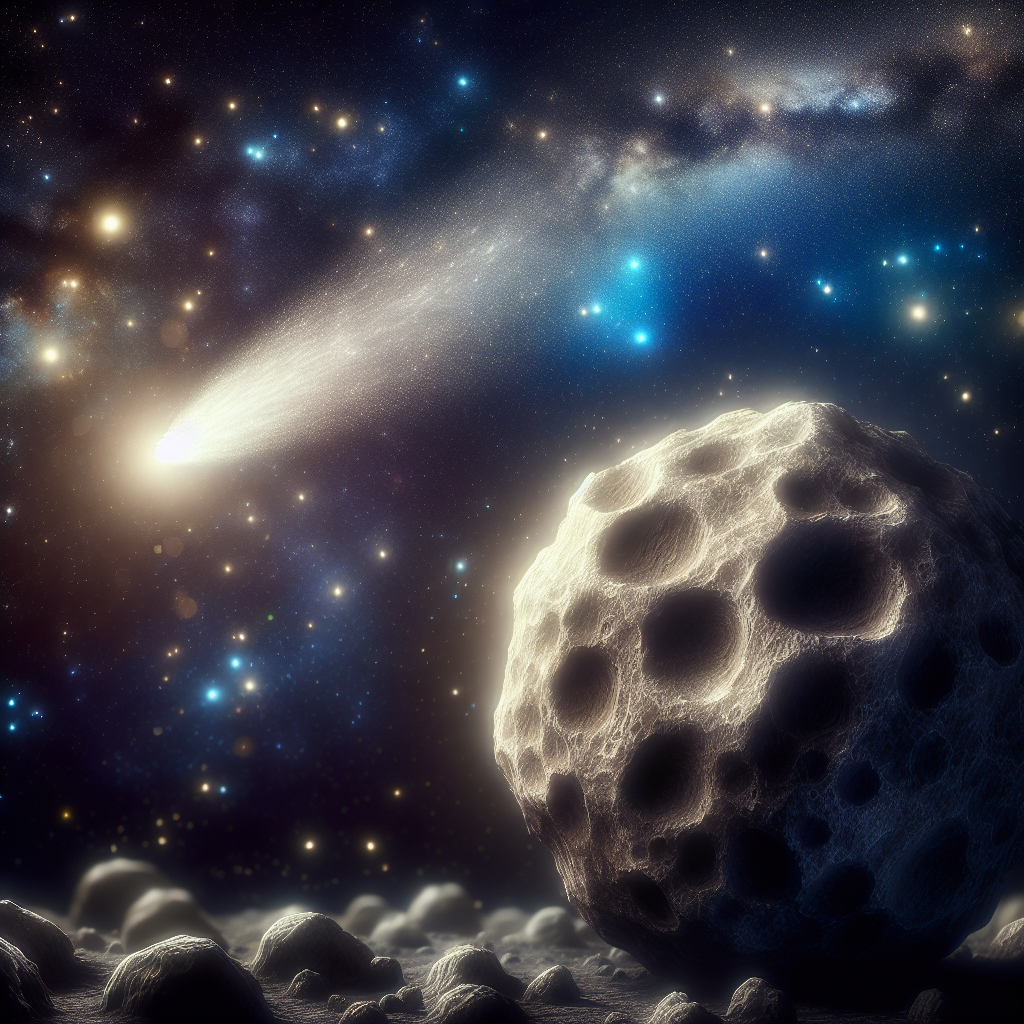Asteroids vs. Comets: Unraveling the Mysteries of Our Cosmic Neighbors

When we gaze up at the night sky, we might wonder about the sparkling stars and the shimmering moon. But lurking in the vastness of space are two fascinating celestial bodies: asteroids and comets. While these objects may seem similar—both of them roaming the cosmos—they are remarkably different in their composition, origins, and behaviors. So, what sets them apart and why should we care? Let's dive into the captivating world of asteroids and comets!
The Basics: What Are Asteroids and Comets?
Asteroids are rocky, airless remnants left over from the early formation of our solar system about 4.6 billion years ago. Most of them can be found in the asteroid belt, a region between Mars and Jupiter. Comets, on the other hand, are often described as "dirty snowballs"—composed of ice, dust, and rocky material. They originate from the icy regions of the outer solar system, specifically the Kuiper Belt and the Oort Cloud. When comets approach the Sun, they heat up, causing the ice to vaporize and produce a beautiful glowing coma and tail.
Why Do They Matter? The Impact on Earth
You might be surprised to learn that both asteroids and comets can pose significant threats to our planet. In fact, scientists believe that it was an asteroid impact that contributed to the extinction of the dinosaurs 66 million years ago. Studying these celestial bodies is crucial for anticipating potential collisions and protecting Earth. On the flip side, comets may also provide insights into the origins of water and organic compounds that are essential for life. Some researchers are investigating whether comets could have delivered the building blocks of life to our planet.
Asteroids vs. Comets: Key Differences
The differences between asteroids and comets go beyond their composition. For instance, asteroids typically have irregular shapes and lack the bright tails we associate with comets. When comets travel closer to the Sun, they develop those iconic tails that can stretch for millions of kilometers. Additionally, asteroids tend to have a more stable orbit, while comets have eccentric orbits that can bring them into close proximity to the Sun, making them visible from Earth.
The Future: Space Exploration and Beyond
As technology advances, space agencies are increasingly focusing on exploring asteroids and comets. NASA’s OSIRIS-REx mission successfully collected samples from the asteroid Bennu, while the European Space Agency’s Rosetta mission studied the comet 67P/Churyumov-Gerasimenko. These missions not only enhance our understanding of these celestial bodies but also pave the way for potential future resource exploitation. Asteroids are rich in metals and water, which could become invaluable for sustaining human life in space expeditions.
Conclusion: Embracing the Cosmic Journey
Asteroids and comets are far more than just rocks and ice floating in space; they tell the story of our solar system’s history and the future of interstellar exploration. By understanding these celestial neighbors, we unlock the door to both protecting our planet and discovering the mysteries of life beyond Earth. So next time you look up at the night sky, remember the fascinating journey that these cosmic travelers have taken, and the secrets they hold for humanity.